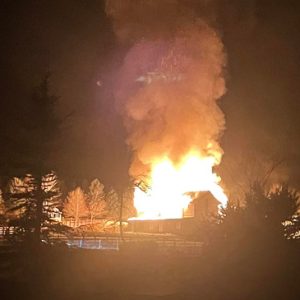The Caribbean and southeastern United States are experiencing an exceptionally chaotic week marked by overlapping natural hazards that are hitting simultaneously. Meteorologists describe it as one of the most complex periods of extreme weather in years, with earthquakes, floods, dust clouds, and developing tropical storms all affecting the region at once. The first event occurred near Trinidad, where an earthquake shook homes and unsettled communities. Though it was not devastating, the tremor heightened anxiety in a region already preparing for peak storm activity. Instead of being an isolated event, the earthquake became the opening warning in a series of environmental threats arriving one after another with no time to recover in between.
In Central America, flooding has become the most destructive and persistent of the current crises. Weeks of heavy rain have overwhelmed rivers, destroyed crops, submerged entire neighborhoods, and washed out crucial infrastructure like bridges and roads. Rescue teams have been working nonstop, but exhaustion is beginning to take its toll. Families are being evacuated by boat, and shelters are filling quickly. Communities that were already vulnerable are now facing housing instability, food shortages, and restricted access to clean water. With conditions still deteriorating, officials acknowledge that recovery will require long-term solutions and international support.
At the same time, a massive Saharan dust plume is sweeping across the Caribbean, reaching islands from Puerto Rico to Jamaica. These dust clouds are not unusual for the region, but the density and scale of this one make it particularly problematic. The thick haze reduces visibility, disrupts flights, and worsens air quality. Health officials are advising people with asthma, allergies, or respiratory conditions to stay indoors, close windows, and use air filtration if available. The dust has coated cars, balconies, and city streets in a fine layer of sand, and hospitals are already reporting an uptick in patients with breathing difficulties. While the dust can sometimes suppress storm development by drying the atmosphere, this plume is arriving alongside an active tropical pattern, adding another layer of complexity.
The Atlantic basin is extremely active, with Tropical Storm Flossie drawing the most attention from forecasters. Conditions over the ocean — warm waters, low wind shear, and open pathways — create an environment where storms can intensify quickly. Several additional disturbances are lined up behind Flossie, forming a chain of potential threats in the coming days. Long-range forecasts show possible impacts extending from the Caribbean to the southeastern United States, including Florida, Georgia, and the Carolinas. Meteorologists are not predicting disaster outright, but they warn that the ingredients for a dangerous storm cycle are all in place. Heavy rain, flash flooding, damaging winds, and coastal surge remain possible as systems develop and shift.
The most alarming aspect of the situation is not any single hazard, but their convergence. Each of these events — the earthquake, the floods, the dust plume, and the developing storms — presents significant challenges on its own. When combined, they overwhelm emergency resources, stretch supply chains, and intensify community vulnerability. Emergency crews already battling floods must now prepare for tropical storms. Hospitals treating respiratory distress must also brace for injuries related to storm debris, flooding, and power outages. Communication networks are saturated with warnings, and misinformation spreads quickly, complicating public response. For people living in flood zones, evacuation may be difficult or impossible. Those dependent on medical equipment face added danger during potential blackouts. Layered crises create layered risks, each one compounding the next.
Officials across the region are urging residents to remain calm but take preparedness seriously. The advice is straightforward but vital: follow reliable weather updates rather than rumors; gather essential supplies such as water, medications, flashlights, and important documents; pre-pack a go-bag; know evacuation routes; and limit outdoor exposure during severe dust conditions. Equally important is community support — checking on elderly neighbors, offering help to families without transportation, and ensuring that those most vulnerable are not left isolated. Experts emphasize that while nature does not wait for one disaster to end before starting another, preparedness and solidarity can significantly reduce harm. The Caribbean and southeastern U.S. are no strangers to extreme weather, but the current convergence of hazards is a reminder of how fragile and interconnected systems can be. As forecasts evolve in the coming days, vigilance and cooperation will be key to navigating the challenges ahead.





